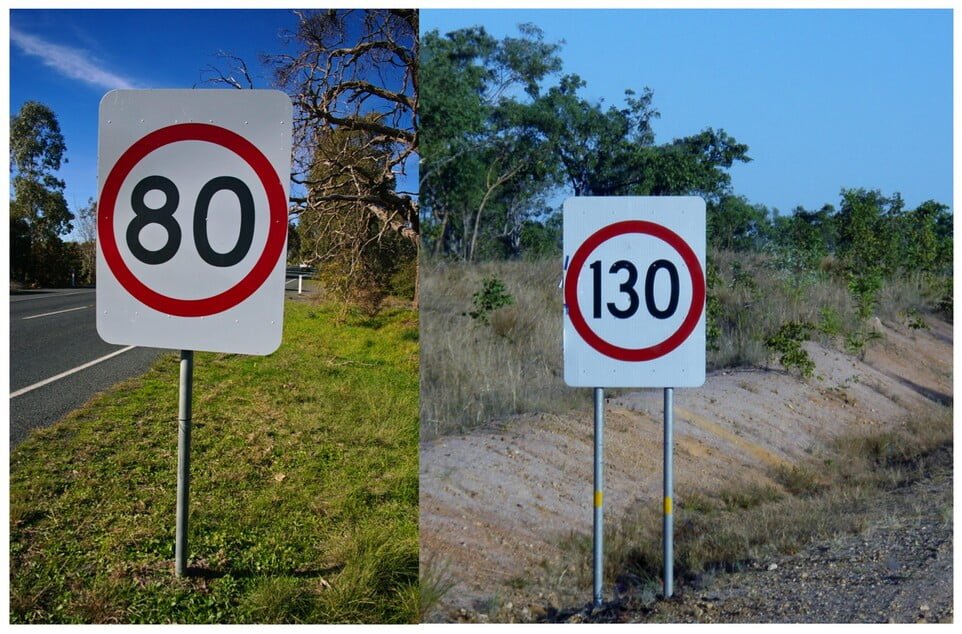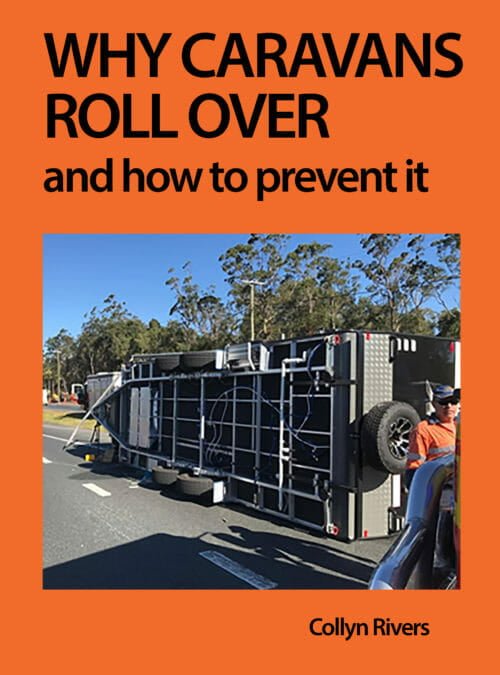by Collyn Rivers
Australian Road Rules Confuse
Australia has different road rules for each state and jurisdiction. As a direct result, Australian Road Rules confuse drivers, cyclist and pedestrians. It would make sense to have just one set of national towing rules.

Light trailers
There is a different ‘light trailer’ benchmarking around the country. To set their light trailer towing rules, New South Wales, Victoria and Western Australia use the weight of the tow vehicle. This a Gross Vehicle Mass of up to 4500 kg (9920 lb). The Australian Capital Territory, Queensland and the Northern Territory use the trailer’s weight. South Australia uses both trailer and tow vehicle weight. Tasmania uses Gross Trailer Mass (not Aggregate Trailer Mass) of up to 3500 kg (7700 lb).
Australian Road Rules Confuse – mixed towing speed signals
There is no Australia-wide re whether trailer towing speed should be less than non-towing. Or what maximum towing speed should be. Western Australia’s towing speed limit is 100 km/h. For all other jurisdictions, it’s the posted limit. That for parts of the Northern Territory is 130 km/h. This is far too high for towing caravans. Here, Australian Road Rules not just confuse drivers. That 130 km/h virtually invites jack-knifing.
Towing dynamics are well understood. So why have a 30 km/h variation?
Should learners and P-Platers Tow Trailers?
In Tasmania, neither learner nor provisional drivers may tow a trailer. South Australia and the Northern Territory has no towing restrictions for a learner or provisional driver. Elsewhere it’s a mix of the two. Even experienced drivers find towing challenging. Tasmania’s rule thus makes sense.
Maximum Towing Weights – Are Unclear
State and territory towing weight terminology is not only inconsistent. There are eight maker-stipulated tow weight restrictions one must not exceed.
Five rules relate to tow-vehicles. Gross Vehicle Mass, Gross Combination Mass, maximum towing capacity, maximum tow bar mass and maximum tow ball mass.
Three more rules relate to trailers. These are Aggregate Trailer Mass, Gross Trailer Mass and maximum coupling load. Other limits, such as tyre and axle weights generally apply.
Australian Road Rules Confuse – there are no uniform terms
There are not just non-uniform rules. There is no uniform terminology. Legislative wording relating to weight varies from state to state. Terms used include ‘carrying capacity’, ‘coupling’, ‘towing apparatus’, ‘maximum trailer mass’. Also ‘towing mass’, ‘towing limits’. Plus ‘any component in the vehicle/trailer combination’. Some terms are not defined. Where they are, not all are clear.
Many rules use the ‘aggregate’ to mean ‘maximum’. ‘Aggregate’ in everyday English refers to crushed stone. It makes more sense to use the alternative ‘Maximum Trailer Mass’. Not Aggregate Trailer Mass or Gross Trailer Mass. Doing so avoids confusion.
Why have Aggregate Trailer Mass (ATM) and Gross Trailer Mass GTM? Few owners know a trailer must not be coupled to the tow vehicle to measure the ATM. Yet connected to measure the GTM.
Tare mass definitions mislead caravan owners. Furthermore, many are grossly incorrect.
Many towing guides have weight-related errors. Some confuse actual and maximum weights. If they can’t get it right, what chance have users?
RV Books suggest towing weights should be explained via simple diagrams. Like these.
We need to agree on what the weights are. How they are defined. And how owners can check them. Also for insurers to provide one free weighbridge check a year per policy. This could encourage weighbridge use.
Towing Equipment – needed or not
Australia’s states and territories have small but significant variations in towing equipment. Here, Australian Road Rules confuse yet further.
Vehicle Standards Bulletin 1, and Australian Standards stipulate towing equipment trailer makers must install. But once a trailer is sold the buyer must ensure all exist. And work.
Safety chains (sometimes cables are permitted) are required throughout Australia. But whether they crossover, cannot touch the ground etc, legally varies. Their need to be long enough for turning is barely mentioned. That rated shackles are not obligatory is absurd.
In NSW only, tow vehicles must have a device to warn the driver if the trailer battery charge is not adequate to fulfil breakaway requirements.
Legislative terminology varies with Weight Distributing Hitches (WDHs).
New South Wales and Queensland say they ‘can be used when towing large caravans‘. Western Australia states ‘a load-distributing device may also be needed’ when towing heavy loads. Both overlook these hitches solve one issue, but introduce another. Also that their use to tow overly heavy loads needs discouraging. Our book Why Caravans Roll Over – and how to prevent that explains why.
Number Plates – Hard to See
Road rules regarding car and truck number plate size, position and content, are similar throughout Australia. But with trailer number plates, their visibility requirements depend on where you live!
In New South Wales and Tasmania, number plates must be readable within an arc of 45 degrees. That arc is above and to either side of the vehicle. The Northern Territory requires them readable over a 15-degree arc from above for vehicles less than 4.5-tonne GVM. And a 45-degree arc otherwise.
The ‘arc visibility’ rules create problems for a number plate beneath the cut-away of an ‘off-road’ trailer. Or if partially obscured by spare wheels and jerry-cans etc.
Victoria has no ‘arc visibility’ rules.
Long Vehicle Variations
A tow vehicle and trailer combination over 7.5 metres is legally a ‘long vehicle.’ Amongst other rules, long vehicles (unless overtaking) must travel at least 60 metres behind another long vehicle on a single lane highway that is not in a built-up area.
In New South Wales, however, a ‘built-up area’ is a ‘road without street lights’. Western Australia’s and the Northern Territory’s minimum distance between long vehicles is 200 metres. In Tasmania, the minimum distance is 60 metres. But, if in a ‘road train area’, it is 200 metres.
Conclusion – Australian Road Rules Confuse
This article is not intended to criticise road authorities. Their job includes setting and enforcing rules.
Australia’s federal structure hampers developing uniform rules that are simple, clear and safe. This is particularly so with towing legislation. The lack of uniformity causes unnecessary issues for people driving interstate. And even more so for overseas visitors hiring RVs.
Towing rules are localised yet towing physics is universal. Escalating caravan rollovers suggest towing principles are poorly understood. Furthermore, this may have disastrous consequences.
Media articles on caravan safety highlight that drivers must understand and comply with towing obligations. Such obligations vary, however. They depend on where their RV is registered. And wherever they drive.
Worse, a driver seeking to tow a caravan around Australia must locate, read, understand and comply with over twenty related legislative instruments, guides and inspection bulletins. This is unfair and unsafe.
A single set of national towing rules is required. Moreover, it would ensure driving easier and safer for all.




